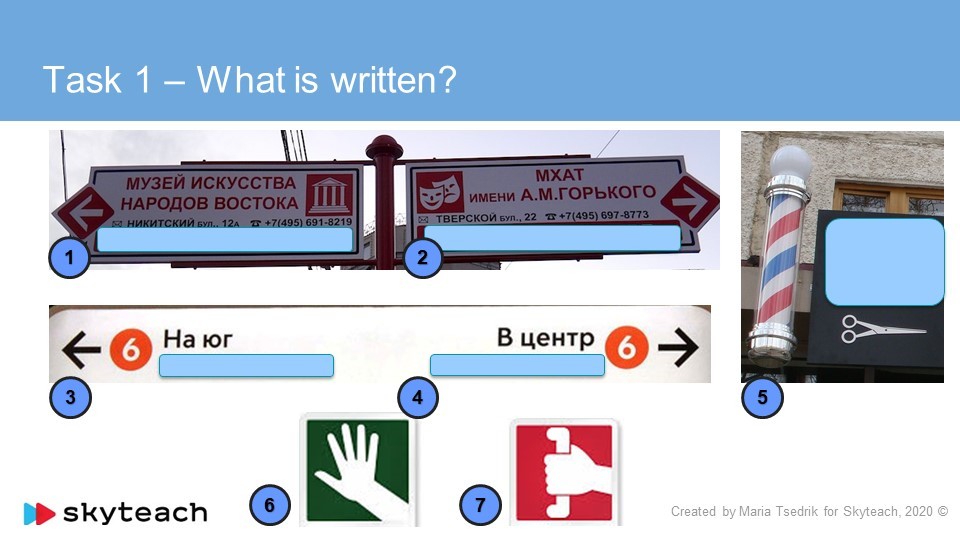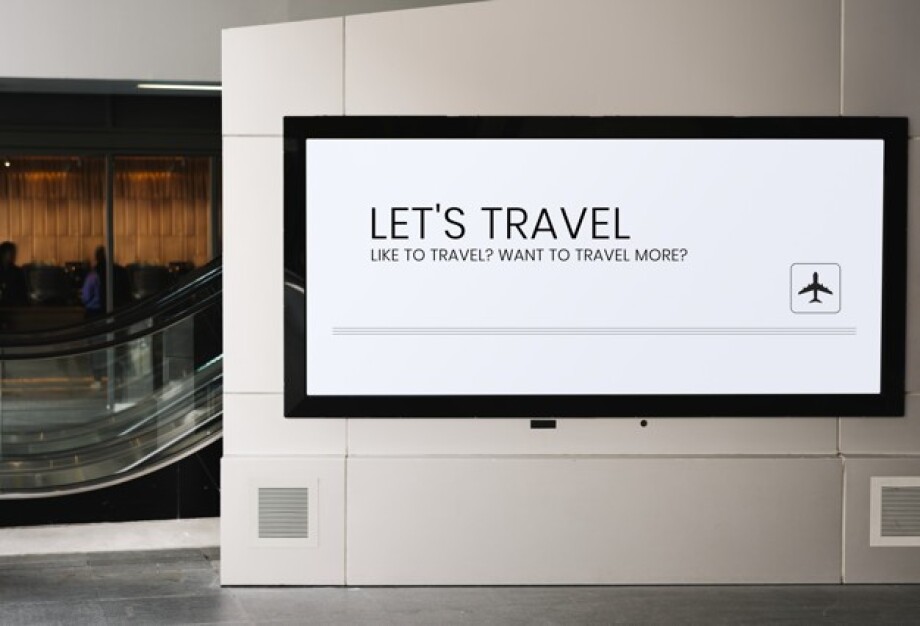Walking around any city means a confrontation with a great number of signs and commercial signage in English. City signs provide an easy, visual and clear way to promote language and culture while they also provide excellent material for language learning in ‘real-life’ situations and indeed for comparative linguistic analysis. Such linguistic landscape items are so catchy that students will remember them and their meanings for a long time. In this article, you will find ideas on how to teach students to identify, analyze signs, practise using modal verbs and develop creative thinking. These lesson ideas are suitable for strong elementary groups.
Task 1. Zoom in and out
Use photography of the city’s signs as a means of learning about the language. Show parts of the pictures to you students and ask to brainstorm in pairs what is written on the signs.

Then show full pictures to check ideas. Ask students where they can see these signs (e.g. «push» and «pull» on doors of supermarkets)
Download an example of the task.
Task 2. What can you see?
Show some funny signs. Ask students to read and guess the pictures.

As a follow-up activity, you can ask students to make-up funny phrases for some common signs. Find more funny signs here.
Download an example of the task.
Task 3. Alternative interpretations
Hand out pictures of the most common sign. Ask students to describe what they mean. Then students should think of alternative interpretations. Put the ideas on the walls, let students walk around and vote for the best/funniest options.
Find some ideas here.
Task 4. Famous slogans.

You can see advertising billboards with slogans everywhere. There are hundreds or more companies with famous brand logos and memorable slogans, for almost all product ranges available in the market. It is difficult not to remember them. Let’s check how well your students know them and their meanings.
Prepare a list of brands that are popular in your country/city. Provide students with names and ask to write down the slogans. For example,
- MasterCard: «There are some things money can’t buy. For everything else, there’s MasterCard.»
- M&M: «Melts in Your Mouth, Not in Your Hands»
- Nike: «There Is No Finish Line»
- Nike: «Just Do It.»
- Apple: «Think Different.»
- L’Oréal Paris: «Because You’re Worth It.»
- Tesco: «Every Little Helps»
- McDonald’s: «I’m Lovin’ It»
If students have difficulties, give hints. Example,
- MasterCard: «There are some things money can’t ___. For everything else, there’s ___.»
- M&M: «Melts in Your ___, Not in Your ___»
- Nike: «There Is No ___ Line»
- Nike: «Just ___ It.»
- Apple: «Think ___.»
- L’Oréal Paris: «Because You’re ___ It.»
- Tesco: «Every Little ___»
- McDonald’s: «I’m ___’ It»
Then students can explain the phrases in pairs and create slogans for billboards in their city.
Homework.
While walking around the city, collect and analyse photographs of English used on signs in your city. Where to find the materials? Publicly displayed texts, such as advertisements, road and street signs, bar, restaurant, shop, banks, post office, graffiti and anything else ‘printed’ as part of a city.
Have great lessons!






 Вероника Аветисян
Вероника Аветисян 
 Маргарита Аветисян
Маргарита Аветисян 


